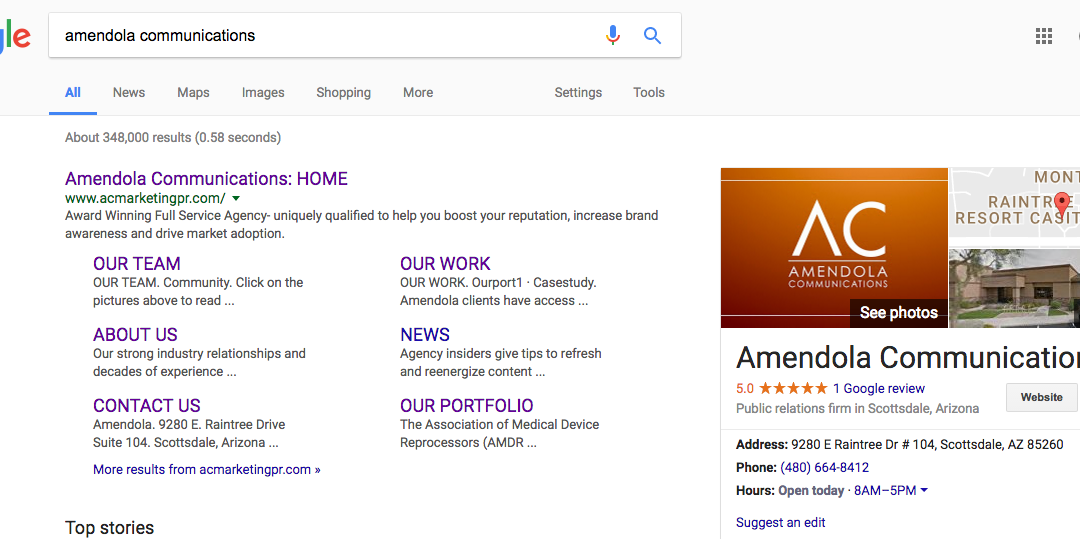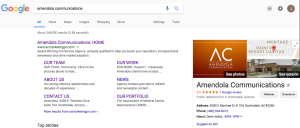
by Jenna Warner | May 24, 2017 | Blog
Grab your Instagram-worthy coffee and make sure you are not guilty of these social media crimes.
Social media marketing is fast paced. Not only does your well thought-out and carefully sliced up 140-character tweet have a short shelf life, but each platform changes almost daily. However, there are some nuances that remain the same. These are my top 5 mistakes to avoid in the ever-evolving social media game.
1. Use old, wrong or low-quality logos
Twitter’s logo is a bird, not a plane and not a weird version of tumblers “t”. The official logo became the bird with no text in 2012. No, I’m not paid by Twitter’s branding manager, but I am fired up about getting everyone on the same page about the logo misuse!
Whenever you need a social media platform’s logo, it is best to visit their branding guidelines or resources. Usually, you can download a free kit that has the logo in many colors and every type of file format.
Another important logo faux pas to watch out for is the dreaded, low-quality profile picture or thumbnail. Nothing screams “We don’t care about this” more than a bad photo as your profile picture. It’s the first impression your potential customers see and you want it to be a good one! Don’t forget to look at your  entire digital presence to make sure you have at least one high-quality photo listed with your brand. Google search is a commonly missed opportunity. Don’t worry, it’s an easy fix! Google uses their very own social network information first to populate the search results side bar. Make sure you gave a great photo or high-quality logo and accurate information listed on your Google+ account.
entire digital presence to make sure you have at least one high-quality photo listed with your brand. Google search is a commonly missed opportunity. Don’t worry, it’s an easy fix! Google uses their very own social network information first to populate the search results side bar. Make sure you gave a great photo or high-quality logo and accurate information listed on your Google+ account.
2. Spam following attacks
Managers that do this are like the sign spinners of social media marketing.
I understand how this strategy developed as you can get short-term results from using this tactic. But these followers are hardly worth your efforts and are most likely either spam-bots or accounts that are not linked to your decision makers.
You should still keep your ratios clean (follow fewer accounts than you have followers) and follow industry leaders and influencers. The key is to focus your efforts when it makes sense for your strategy, not sporadically and aggressively. Twitter will actually step in when it becomes too much of a problem, but please, never get to that point.
3. Miss an engagement or sales opportunity
Uh, hello? It’s called SOCIAL media. Be social! Especially if you are a B2B organization, this type of engagement just isn’t as common as the B2C counterparts on social media. Capitalize on the opportunity as it arises! There is no shortage of free software available to help manage your engagement. Find brand champions that aren’t tagging your account, yet still praising your name, fix customer problems or complaints and develop new sales leads.
Make sure your engagement is timely and relevant. Search all hashtags used or links shared before posting or replying. Also, make sure the account you are engaging with is a real person not just a bot or an irrelevant twitter user.
4. Forget to sign out of the company account
Yikes! This is an ugly one. People get fired over this and it is not a great situation to be in. Personally, as a practicing social media manager, I steer clear of posting politics on my personal social accounts and I keep it PG. This choice decreases my risk of posting something truly terrible on a company account. Newton’s law of gravity doesn’t apply to the internet. What goes up, stays up on the internet.
There are too many examples like the twitter accident that happened to Chrysler.

5. Assume you have learned everything
The beauty and challenge of social media marketing is that it’s always changing. It’s hard to be the ultimate expert in something that is always changing and moving! Stay in touch with reality and assume there is always something new to learn and observe. I find it to be the best way to approach social media.
Hashtag conversations and meanings can change hourly, platforms have repositioned based on users habits and algorithms change all the time! The Internet is a place where traditional marketing practices and new forms of communication can be used in collaboration to create meaningful engagements with your audience.
Here are a few methods I use to stay up-to-date on my social media marketing skills:
Use social media platforms for personal use
Read and subscribe to social media marketing blogs and news outlets
Listen to podcasts on the digital strategy
Attend webinars on social media marketing
Look at competitors or other industries and figure out what is working for them
Make sure not to commit any of these social media mistakes and comment below with other social media rules that stand the test of time.

by Jodi Amendola | Mar 8, 2017 | Blog
At our agency we think of HIMSS as our “Christmas.” We face similar time pressures and high expectations as those in retail leading up to the holiday, but as one team member says, “HIMSS is the “Happiest Time of Year.”
Like the annual family gatherings, we see clients, media, analysts and industry leaders all in one place. We network with old and new colleagues, learn about new offerings and trends and much more. However, it’s not all Christmas carols and eggnog. There’s quite a bit of hard work that occurs months before HIMSS: arranging meetings, creating themes, developing strategies and plans, and then poof it’s over. Just like Christmas, the rush of opening presents is over in a blink and before you know it, it’s time to take the tree down and do your gift returns.
It’s true, HIMSS is now over, but there is still fun to be had! As you leverage the opportunities you uncovered and follow-up on all of the activities leading up to and at the show, you’ll experience the “gifts” of secured bylined articles, analyst coverage and strengthened relationships.
And even if you still have a HIMSS hangover and that extra Tylenol and sleep hasn’t yet kicked in we’ve made it easy for you with the best practices listed below. Follow each step and you’ll magic those leads into tangible results!
- Do your follow-ups from media interviews, networking events, speakers you enjoyed, potential partners, existing partners with whom you met, etc. In fact, often the best conversations come from those random instances where you bumped into someone on the exhibit hall floor or in the elevator. Never underestimate the impact of unexpected conversations and meetings at HIMSS those are my favorites. After 20+ years of attending the conference, I love the reunion aspect of it. It’s the perfect way to re-connect with industry colleagues, clients and members of the media. Be sure to follow-up with a note on LinkedIn or an email you never know what will happen!
- Great information doesn’t mean actionable information. Translate what you’ve heard/learned into goals and actionable next steps. But don’t get distracted by the shiny new objects that you learned about at HIMSS. Instead, focus on what applies to your organization, your product line and the larger business/industry problems that your company’s solutions address. Don’t try to be all things to all people it just doesn’t work. Be clear about who you are, your value proposition and unique differentiators, and most importantly, how you solve your client’s real-world problems.
- Biggest challenge: Prioritization of all those great ideas! HIMSS is over now don’t waste the investment. Develop a calendar of follow-up marketing initiatives to continue driving interest and momentum, along with an execution strategy. Below are some of my personal secrets to success:
- Did you launch a new product at HIMSS? Do you have a client user or a pilot running? Did you conduct a Focus Group or survey at the show? Now is a good time to share the results. Leverage post-HIMSS press releases to continue the excitement. Be strategic and space the news out appropriately. Generally, I recommend a cadence of every other week, if news permits.
- Continue your social media outreach using #HIMSS17 – and even add #HIMSS18 as you look toward the coming year’s trends!
- Wondering what to do with all the contact information you collected from prospects, potential partners and investors who stopped by your booth? Implement a timely email campaign to continue the conversations and reach them at various stages of the buying funnel. I suggest disseminating a series of targeted e-blasts with a strong call-to-action such as downloading a gated white paper, infographic, ROI calculator or other value-added content.
- Did you capture client testimonial videos at the show? Embed them into your corporate presentations, highlight them on your website and promote them via social media.
- Did you or your clients present at HIMSS? Take that content and turn it into one or more thought leader articles, blog posts, ebooks, webinars (which can then be uploaded to SlideShare), podcasts and possibly the inspiration for a thought leadership video series. Content can usually be sliced and diced in multiple ways; leverage what you have rather than creating new materials.
- Biggest misstep: Not tying your new/updated goals, strategies, and tactics derived from HIMSS’ insights to your organizational KPIs. Remember, if your results don’t track to the CEO’s expectations, they don’t count!
P.S. Don’t forget to tune in for my next post on healthcare IT analysts and key influencers top takeaways from HIMSS. They’ll set you on the right path for the rest of 2017! Finally, I hope you all had a Merry HIMSS I know our A-Team did!

by Jenna Warner | Jan 18, 2017 | Blog
You may have heard of the 4 P’s of marketing: price, product, place, promotion. It’s a broad view to the marketing puzzle of taking a product or service from concept to consumer. Sometimes, businesses gain ground without thinking through these 4 Ps. Rapid growth is bound to plateau at some point and that when it is the perfect time to take a step back.
So, what’s next? Now, you just need to solidify how you can take your company to the next level. The next step may need to be more targeted and work quickly to reach the rapid growth you were projecting.
Nowadays marketing options are everywhere. You could pick multiple paths or you could home in on one big trend. The key is to find balance on the scale: Not spending too much time on one effort and not stretching resources too thin across multiple efforts.

Marketing efforts work best when they work together, with similar power across a range of efforts much like a crew of rowers all working at the same time to move. When one oar is doing all the work, you’re not going anywhere. The same thing happens in marketing and PR. It needs to be strategic and comprehensive to “move the boat.”
Carrying on the alliteration fun of the 4 p’s, here are 4 ways to start thinking like a marketer in your next strategic campaign. Use this process to focus your efforts for maximum results!
1. Picture
If you could picture your perfect marketing strategy plan what would it be? List all items or initiatives that you would like to see happen. This is the time to be a little unrealistic. Think of all the efforts that would make a difference in reaching your end goals. Include stretch goals, SMART goals, and even some ideas you know you don’t have the resources to complete.
Think of a variety of goals and efforts. For example maybe you want to increase your social media engagement or maybe you just want to better target a specific demographic.
Get your ideas out and on paper to discus with your team or your agency. The benefit to adding all of your goals in the discussion phase is that there might be options that are more plausible than you thought. This can also help generate new ideas from your team.
Don’t limit yourself in the initial brainstorm, or you might find yourself feeling some regret down the road. Prevent this by letting the creative juices flow early on in the process!
2. Prioritize
Now it’s time to get realistic. Until artificial intelligence (AI) and biorobotics are developed enough for us to be highly-productive cyborgs, we are going to have to live with the fact that we are human. There are only so many things that we can do at one time, and only so many things we can do well. Not to mention the budget we have to execute them.
There are also limitations as to how many or what type of marketing and PR efforts will benefit your company. You don’t want to waste your time creating a great marketing effort that falls on deaf ears. Like an Instagram campaign for Medicare, when only 15% of Instagram users are above the age of 50.
Do your research, ask others for their opinions, and see what efforts will make the most impact on your target market. You want to think of immediate lead generation, long-term lead generation and customer loyalty.
3. Plan Ahead
Now that you have a prioritized list of what you want to accomplish, its time to decide when things need to be completed. A thrown-together effort isn’t going to have much of an effect. In fact, if it’s sloppy it may have an adverse effect on your potential customers.
My favorite example of this happening, all too often, is the holidays. It seems every year I hear people say, “Oh the holidays just snuck up on me!” While I understand this, and may have said it myself, it’s just not true. We know the exact date years in advance. You may not be able to finish your personal holiday shopping before Thanksgiving every year, but it is important to stay ahead of schedule for your business.
It’s tempting to throw together a cool initiative after seeing another company perfectly execute one, but will it be valuable to your target market? If you think of a great idea for a Thanksgiving email at 9:00 pm on Thanksgiving eve and you can’t complete it, don’t scrap it! You can use it next year.
Train yourself to think like a retailer. Have you ever been annoyed at the sight of Christmas decorations for sale in August? Use that as your reminder to start thinking about holiday marketing efforts. Or other annual events related to your business.
4. Pull
Your efforts should pull your audience in. Every effort, regardless of how much power you have behind your strategy, should be focused on the end goal. When you go to execute your plan all efforts should be relevant to your customers and their pain point that you solve.
Your social media strategy should be targeted at your ideal customer, digital marketing efforts should all center on your customer and your article placements should be in publications your targets are reading. It’s easy to get caught up in something that looks cool or to fit in somewhere you have a connection. However, if it has nothing to do with your brand, what’s the point?
You know your customers pain points, but do your marketing efforts show your customers you want to alleviate them? For example: fitness gyms have an extreme increase of patrons and new memberships in the months of Jan- March, as many make their New Year’s resolution to get healthy. Let’s say your business is a solution for an automated member check in system that makes going to the gym easier for patrons and puts less strain on staff during rushes. You want to start marketing to gyms as they are preparing for this rush, not in the middle of the painful rush.
There are so many ways to incorporate your brand into something funky that isn’t a direct sell. But it should all point to you and your brand’s values in some way.
Set your business up for long term success by dreaming big, selecting what you can do, acting on it in a timely manner and using every effort to engage with your customer.

by Jodi Amendola | Nov 23, 2016 | Blog
Like so many companies, you want to promote your company brand and unique value proposition far and wide. But convincing others to pull the trigger on hiring a PR agency is proving to take more time than you anticipated. Or, perhaps you’re the one who isn’t sold yet on bringing in agency expertise. It’s a big decision, no doubt in some ways, as important as choosing a spouse! But there’s also one surefire way to assess if you should hire an agency: Is the timing right?
With 25 years of experience in PR, including owning the fastest-growing agency in healthcare technology, I can help you sort it out. The first step is to determine what your goals are. Why do you want to be front and center in the news? Reasons can vary some of our clients want to stand out clearly from the competition; others want to gain a share of voice on industry trends, and still others want to position their company for a strategic acquisition or IPO.
Once you’ve identified why you want to effectively and consistently promote your company, products, services and thought leaders, then you can move on to 10 key questions to help you make a decision about hiring a PR agency now or in the future. The questions fall under five categories and your answers will give you an honest assessment about whether or not you need a PR agency at your side.
STRATEGY:
#1 Do you have a precise understanding of your target audiences and which media outlets they are mostly likely to engage with? Are you reaching them now or do you need to?
#2 In the event of an unexpected challenge from a competitor/member of the media/credible industry insider, do you have sufficient resources readily available for a rapid response?
#3 In the event of a crisis, do you have the right PR resources in place to quickly gain control of the public dialogue?
MEDIA RELATIONS:
#4 Are you successfully cultivating and maintaining media relationships with key influencers in your space? Are you sending them interesting pitches based on their beats to secure ink for you and your clients?
#5 Are you reaching out to the right media outlets? Every day I hear from prospects that they want to be in the NY Times or the Wall Street Journal but are those the outlets your buyers are reading like the niche pubs in your own office lobby, or the ones they hand out at targeted key trade shows?
CONTENT MARKETING:
#6 Are you creating and distributing enough information to educate today’s information-driven buyers at every step of the buying process? Establishing your educational/thought leadership position through each phase is often critical when it comes time to making purchasing decisions.
#7 Are you getting your thought leaders’ messages out to your targeted markets and media outlets?
SOCIAL MEDIA:
#8 Do you have an effective social media strategy in place that is getting you noticed and talked about by industry/digital influencers?
ANALYST RELATIONS:
#9 Are you getting cited in the most widely read industry reports where your competitors are?
INDUSTRY RECOGNITION:
#10 Do we receive the recognition we deserve through different awards, speaking opportunities and trade show presentations?
Now, time to assess the results. If your answers have left you feeling somewhat alarmed about your own company’s “PR readiness,” don’t worry help is just a free consultation away. And now that you know where you’re particularly vulnerable, you can have this consultation tailored to your most pressing needs. We’re here to help you make an informed decision!
by Tara Stultz | Nov 16, 2016 | Blog
All languages employ idioms, or phrases that have a figurative meaning that goes beyond the literal use of the words and English is no different. In fact, the English language includes an estimated 25,000 idiomatic expressions such as “breath of fresh air” and “clean bill of health.”
We commonly use idioms in business and in marketing and public relations to emphasize a point or make it more memorable. Unfortunately, many idioms are often misused. So much so, that the incorrect usage of idioms in some cases has become more common than the correct use. As we know, though, impressions are everything when it comes to PR, so it’s important to get it right.
Here’s a refresher on commonly used and misused idioms that tend to come up frequently in PR:
- Flesh out that idea or proposal, don’t flush it out. When you flesh something out, you’re giving it more substance and building out the details. Flushing out refers to clearing something out like a sewer line or getting it out of hiding.
- Home in on your key messages, don’t hone in on them. To home in on something is to zero in on it, as a missile homes in on a target. Hone (which shouldn’t be used with in, in this way) means to sharpen. So you home in on your key messages, and then you hone them until they are razor sharp.
- You’re champing at the bit to get started on a project, not chomping. If you’re eager to get a new initiative going, you’re champing at the bit as a horse does when anxious to start a race. Although horses also chomp, or chew noisily, they do so when eating not when anticipating something. (Note: This is one of those idiomatic expressions that is so commonly misused, some dictionaries include both versions of the expression. But the Associated Press Stylebook, the go-to style guide for major media outlets, has spoken and AP still prefers the original usage of “champing.”)
- It’s for all intents and purposes, not for all intensive purposes. For all intents and purposes means “in effect,” or “practically speaking”: “For all intents and purposes, we have completed our crisis communication plan.” All intensive purposes is a misuse of the original phrase, which comes from British legal terminology originating in the 1500s.
As with “for all intents and purposes,” a number of idioms have “eggcorns,” which means a similar-sounding word or words are substituted for the original due to mishearing or misinterpreting the correct term. The word eggcorn is thought to be a playful descriptor based on a theoretical mishearing of the word “acorn.”
Since eggcorns most often occur with homophones, or words that sound the same to the ear, these idiomatic faux pas occur most frequently when writing a phrase after hearing it spoken.
Here are a few common eggcorns to keep in mind:
- You toe the line, you don’t tow it. Toeing the line means you conform; you do what you’re expected to do and follow the rules. This phrase comes from racers placing their toes at a start line before a race. You can use a line or cable to help tow something such as a boat, but the line does the towing not vice versa.
- You give people free rein, not free reign. When you give others free rein as you might with a horse you give them the freedom to do what they want. Reign refers to the act of a monarch ruling a nation or territory.
- When someone is strongly favored in a competition, he or she is a shoo-in not a shoe-in. This is another idiom related to horses are you sensing a pattern? If you think about “shooing” a fly, it’s moving in the direction you want it to. The same is the case with the horse/candidate/whomever you want to win some kind of race supporters cheer the candidate on, shooing him or her towards victory.
- A creative idea piques your interest, it doesn’t peak it. If your interest is piqued, you are excited or curious about something. Peak refers to a pointed end or a hilltop or mountaintop.
- It’s per se, not per say. Per se is Latin for “by itself”: “The correct use of idioms doesn’t make you a genius, per se, but it’s a point in your favor.” It’s surprising how often the incorrect “per say” appears in writing, and from some super-smart people. Likely a case of the error being repeated so often, it starts to look correct.
- You wait with bated breath, not baited breath. The adjective bated means “with great suspense,” and this phrase refers to waiting for something anxiously or excitedly. When something is baited, on the other hand, a predator is attempting to lure its prey.
So now that we’ve homed in on the most common incorrect usage of idioms, I know you’re champing at the bit to toe the line when it comes to proper usage. (Yes, I had to do it.)
Page 8 of 10« First«...678910»

 entire digital presence to make sure you have at least one high-quality photo listed with your brand. Google search is a commonly missed opportunity. Don’t worry, it’s an easy fix! Google uses their very own social network information first to populate the search results side bar. Make sure you gave a great photo or high-quality logo and accurate information listed on your Google+ account.
entire digital presence to make sure you have at least one high-quality photo listed with your brand. Google search is a commonly missed opportunity. Don’t worry, it’s an easy fix! Google uses their very own social network information first to populate the search results side bar. Make sure you gave a great photo or high-quality logo and accurate information listed on your Google+ account.



